Serving 111 students in grades Prekindergarten-6, Mount Hope ranks in the top 50% of all schools in Alabama for overall test scores (math proficiency is top 30%, and reading proficiency is top 30%).
The percentage of students achieving proficiency in math is 30-34% (which is higher than the Alabama state average of 29%). The percentage of students achieving proficiency in reading/language arts is 50-54% (which is higher than the Alabama state average of 47%).
The student:teacher ratio of 11:1 is lower than the Alabama state level of 17:1.
Minority enrollment is 14% of the student body (majority American Indian), which is lower than the Alabama state average of 49% (majority Black).
Quick Stats (2025)
- Grades: Prekindergarten-6
- Enrollment: 111 students
- Student:Teacher Ratio: 11:1
- Minority Enrollment: 14%
- Overall Testing Rank: Top 50% in AL
- Math Proficiency: 30-34% (Top 30%)
- Reading Proficiency: 50-54% (Top 50%)
- Science Proficiency: <50% (Top 30%)
- Source: National Center for Education Statistics (NCES), AL Dept. of Education
Top Rankings
Mount Hope ranks among the top 20% of public schools in Alabama for:
Category
Attribute
Most improved public schools
Community Size
Student Attention
School Overview
Mount Hope's student population of 111 students has declined by 19% over five school years.
The teacher population of 10 teachers has grown by 11% over five school years.
Grades Offered
Grades Prekindergarten-6
Total Students
111 students
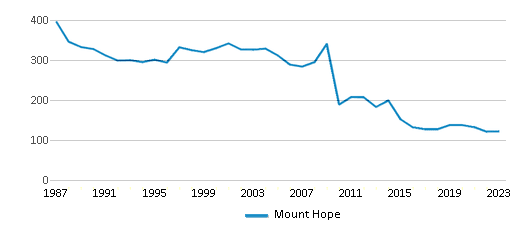
Gender %

Total Classroom Teachers
10 teachers
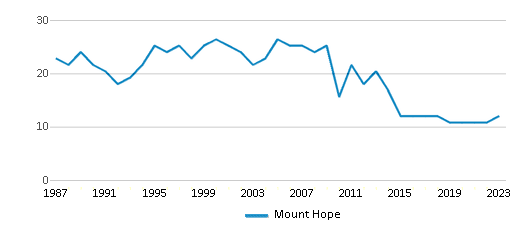
Students by Grade
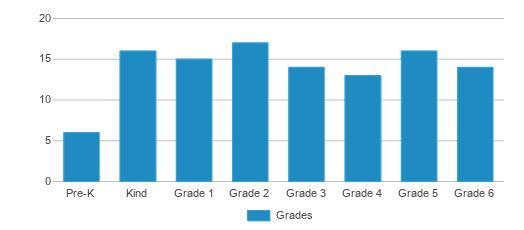
School Calendar
School Rankings
Mount Hope ranks within the top 50% of all 1,285 schools in Alabama (based off of combined math and reading proficiency testing data).
The diversity score of Mount Hope is 0.25, which is less than the diversity score at state average of 0.63. The school's diversity has stayed relatively flat over five school years.
Overall Testing Rank
#393 out of 1285 schools
(Top 50%)
(Top 50%)
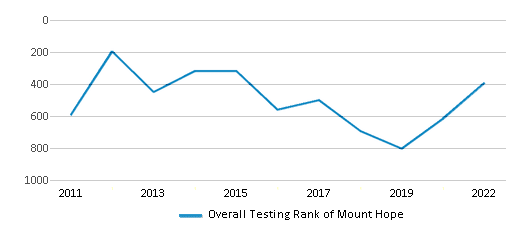
Math Test Scores (% Proficient)
30-34%
29%
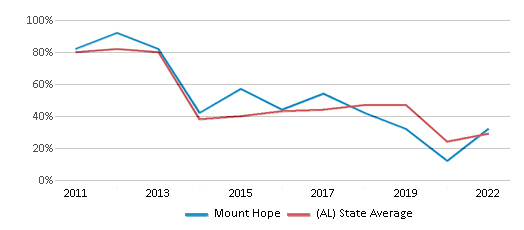
Reading/Language Arts Test Scores (% Proficient)
50-54%
47%

Science Test Scores (% Proficient)
<50%
38%
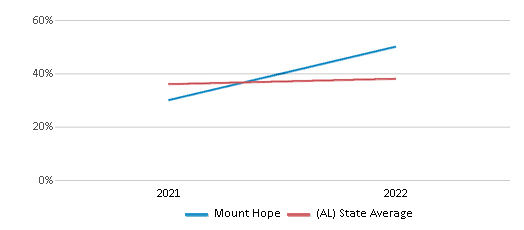
Student : Teacher Ratio
11:1
17:1
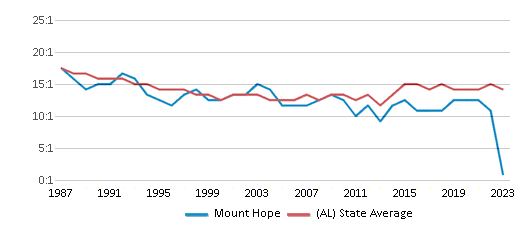
American Indian
8%
1%
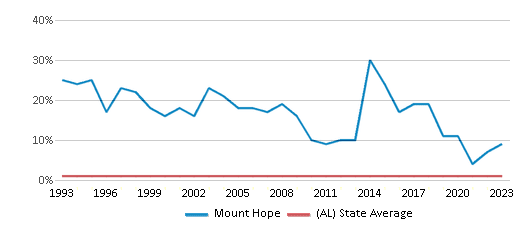
Asian
n/a
1%
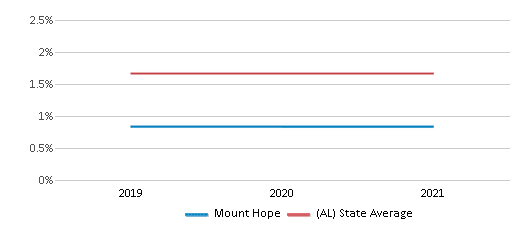
Hispanic
n/a
11%
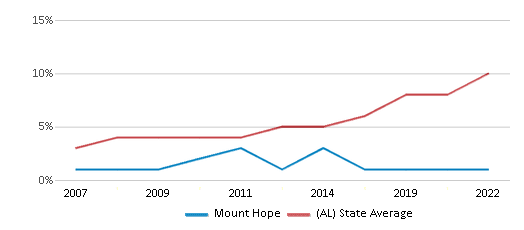
Black
1%
32%
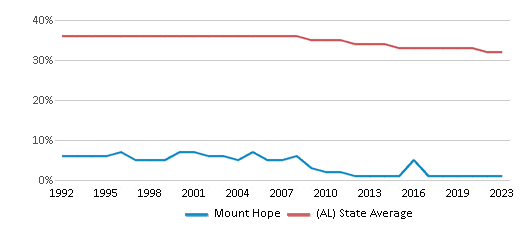
White
86%
51%
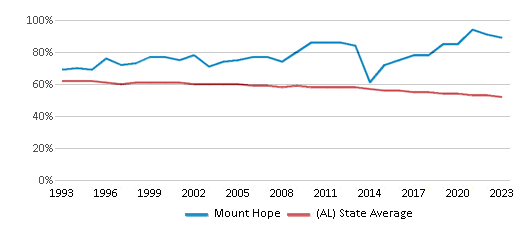
Hawaiian
n/a
n/a
Two or more races
5%
4%
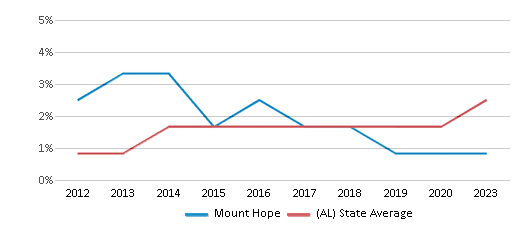
All Ethnic Groups
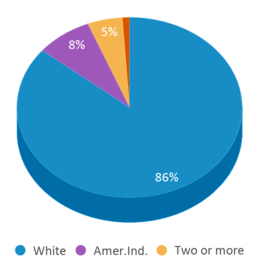
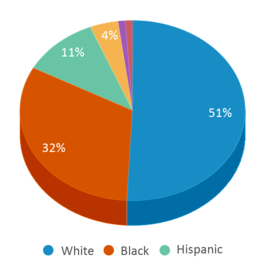
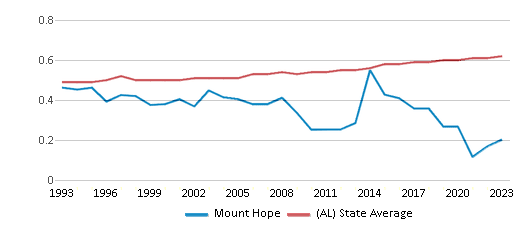
Participates in the National School Lunch Program (NSLP)
Yes
Eligible for Free Lunch
66%
56%
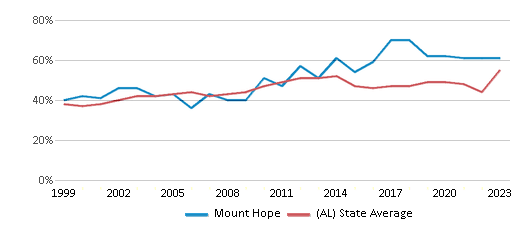
Eligible for Reduced Lunch
4%
5%
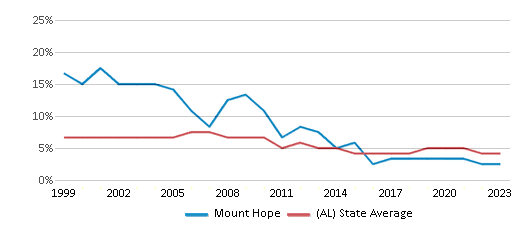
School Statewide Testing
School District Name
Source: National Center for Education Statistics (NCES), AL Dept. of Education
Profile last updated: 02/09/2025
Frequently Asked Questions
What is Mount Hope's ranking?
Mount Hope is ranked #393 out of 1,285 schools, which ranks it among the top 50% of public schools in Alabama.
What percent of students have achieved state testing proficiency in math and reading?
30-34% of students have achieved math proficiency (compared to the 29% AL state average), while 50-54% of students have achieved reading proficiency (compared to the 47% AL state average).
How many students attend Mount Hope?
111 students attend Mount Hope.
What is the racial composition of the student body?
86% of Mount Hope students are White, 8% of students are American Indian, 5% of students are Two or more races, and 1% of students are Black.
What is the student:teacher ratio of Mount Hope?
Mount Hope has a student ration of 11:1, which is lower than the Alabama state average of 17:1.
What grades does Mount Hope offer ?
Mount Hope offers enrollment in grades Prekindergarten-6
What school district is Mount Hope part of?
Mount Hope is part of Lawrence County School District.
School Reviews
5 2/22/2014
Hey its Harley Wesson and I was just wondering if u can tell everyone who was in my class that I miss them for me
5 11/4/2007
This school is a wonderful place of learning for my children. The teachers have always taken time with them and been genuinely concerned for their well-being. Parents are involved and encouraged to be involved with every aspect of their children's learning. It is a small school in a farming community, which only adds to its lure. I have found the school and the community itself to be a perfect place for anyone looking to get away from big schools and huge cities where your children get lost in the shuffle. At Mount Hope, they will never be "lost". There are sports and music for those who like that. Also, the Boy Scouts and Girl Scouts are available for children interested. No, I guess we don't have every type of extracurricular activity that Hunstville or some of the other "big cities" have; but, we also don't have the drugs and crime they have either. I will take my chances with the outstanding values set aside by this school any day.
5 2/2/2007
This is a very good school. Teacher's take the time to make sure the student's are learning. They have a good athelic program as well as a youth program. Parents are very involved with all aspects of this school. From the classroom to the ballfield. Everyone knows everyone.
Review Mount Hope. Reviews should be a few sentences in length. Please include any comments on:
- Quality of academic programs, teachers, and facilities
- Availability of music, art, sports and other extracurricular activities
Recent Articles

What Is A Charter School?
Explore the world of charter schools in this comprehensive guide. Learn about their history, how they operate, and the pros and cons of this educational innovation. Discover key facts about charter schools, including admission policies, demographics, and funding, as well as what to look for when considering a charter school for your child.

10 Reasons Why High School Sports Benefit Students
Discover the 10 compelling reasons why high school sports are beneficial for students. This comprehensive article explores how athletics enhance academic performance, foster personal growth, and develop crucial life skills. From improved fitness and time management to leadership development and community representation, learn why participating in high school sports can be a game-changer for students' overall success and well-being.

February 05, 2025
Understanding the U.S. Department of Education: Structure, Impact, and EvolutionWe explore how the Department of Education shapes American education, from its cabinet-level leadership to its impact on millions of students, written for general audiences seeking clarity on this vital institution.









